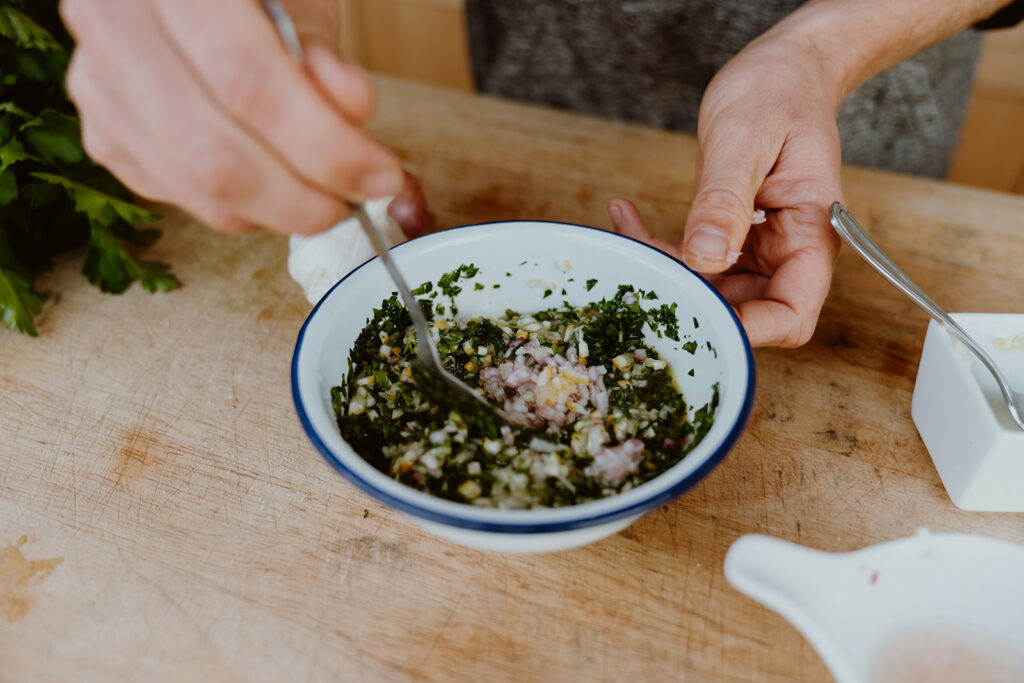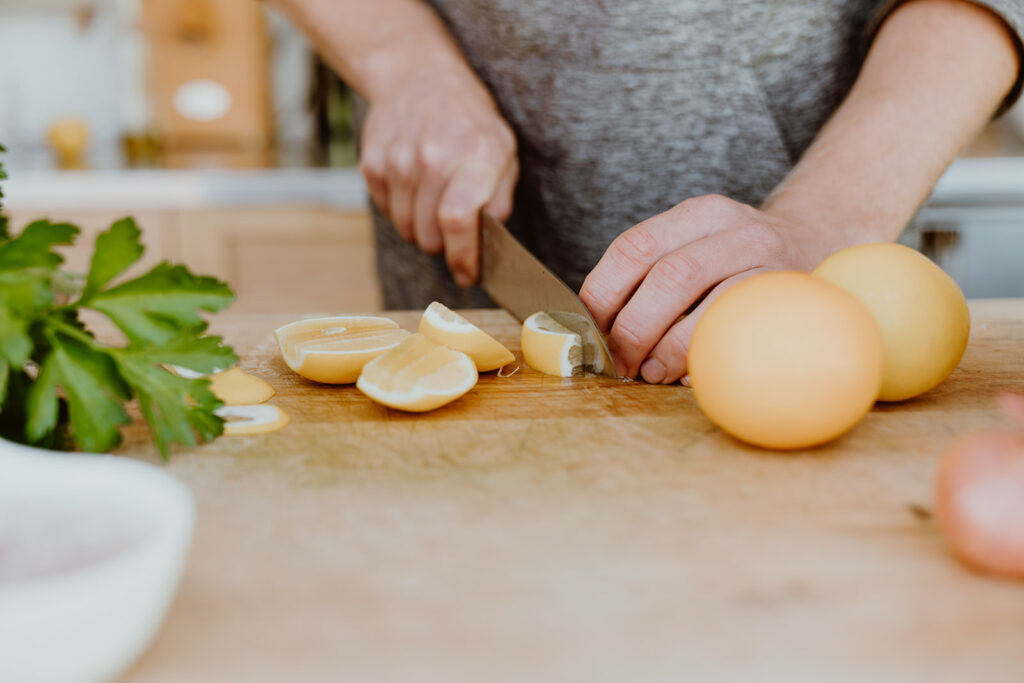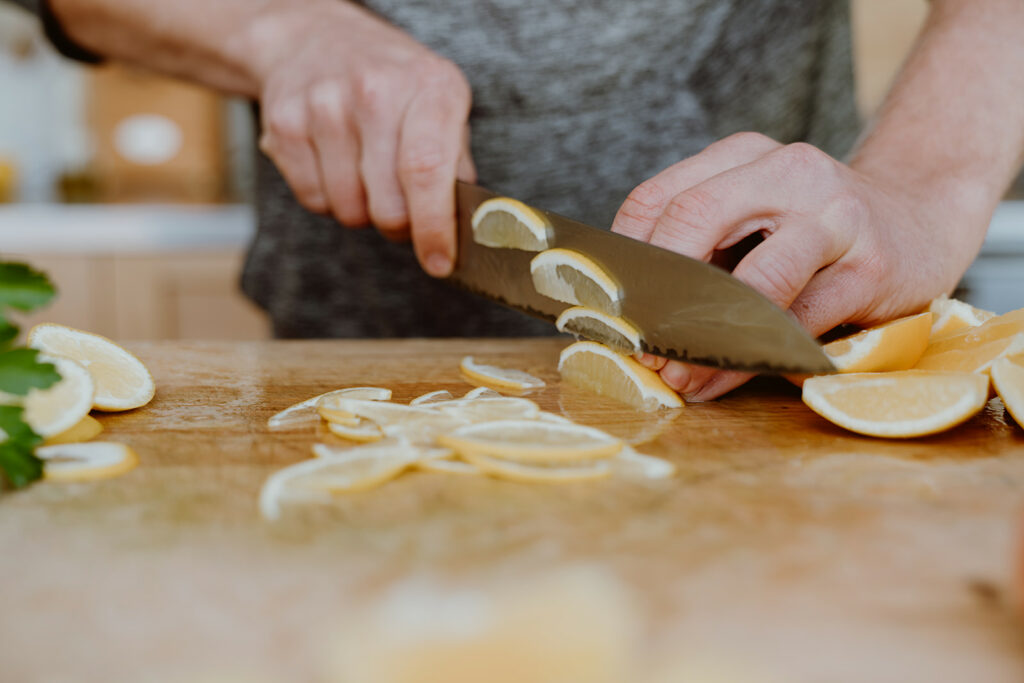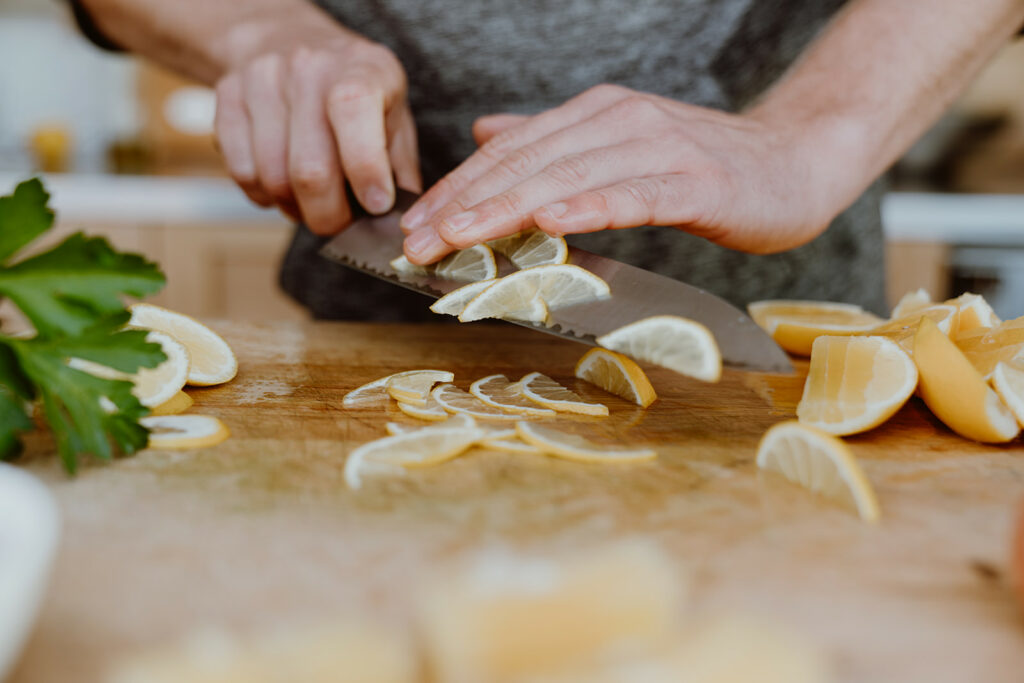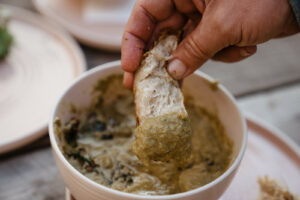For this recipe, we created a video showcasing how this relish can be prepared and topped on seared swordfish – but this relish is equally great when paired with vegetables as shown in our photos.
Meyer lemons are most likely a cross between the eureka lemon and mandarin orange. They are much sweeter than their more common counterparts. They are smaller and rounder with a deeper yellow and smoother skin and an aroma and flavor that are more complex. Every part of this lemon (aside from the seeds) is delicious when prepared appropriately.
First, a quick lesson about the main parts of the fruit: the flesh, pith, and skin. The flesh of the fruit is the juicy interior that we typically eat or squeeze. Depending on the type of fruit, it usually contains seeds closer to the center. The skin is the outermost layer of the fruit with its distinguishing color. This is the part we might use for zest. The pith is the white, fibrous layer between the skin and the flesh. Most often this is the least desirable part and may range from tolerable to inedible. In the Meyer lemon, this part is fairly tender and inoffensive, it actually adds nice texture. Now for the recipe:
| Ingredients | |
|---|---|
| 3 | ripe Meyer lemons, cut into bits |
| 2 | shallots, finely minced |
| 1 | bunch parsley |
| 1 | medium clove garlic, pounded or grated |
| – | champagne vinegar |
| – | olive oil |
| – | salt |
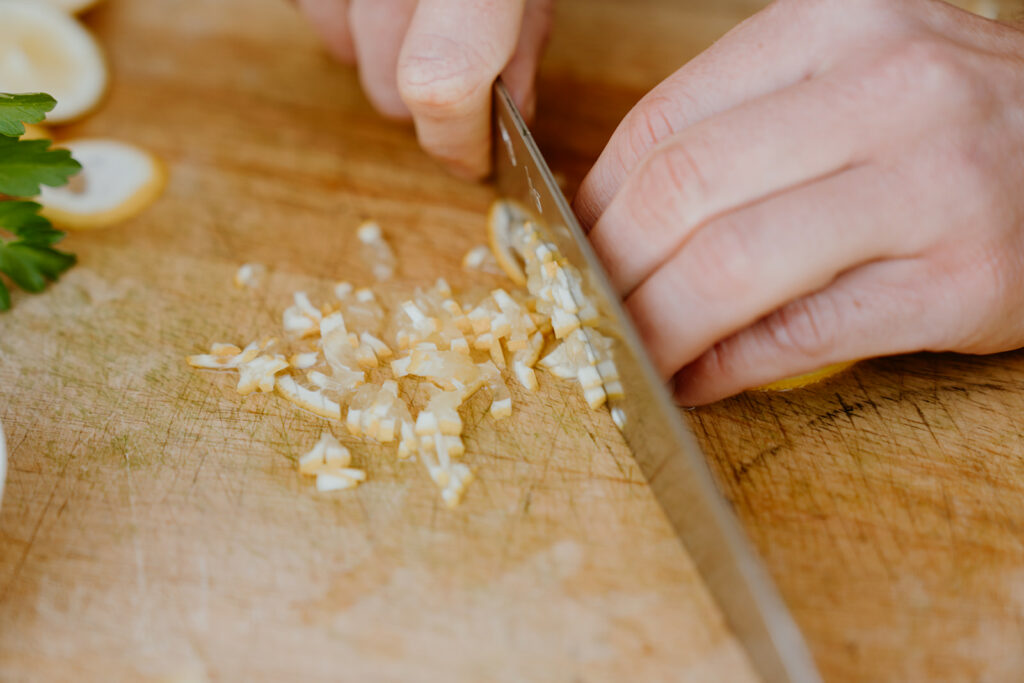
Start by cutting the Meyer lemons into bits. Remove the core of the fruit with the flesh containing most of the seeds. Do this by cutting off the four sides along with the top and the bottom. Set aside the core into a bowl. Poke out any seeds that remain in the flesh attached to the skin. Then slice the six pieces of each fruit very thinly so that you have pieces that look like the sun sitting on a horizon. Now julienne those little half-suns so that you have lots of ‘bits’ containing a bit of flesh, pith, and skin. Set them aside.
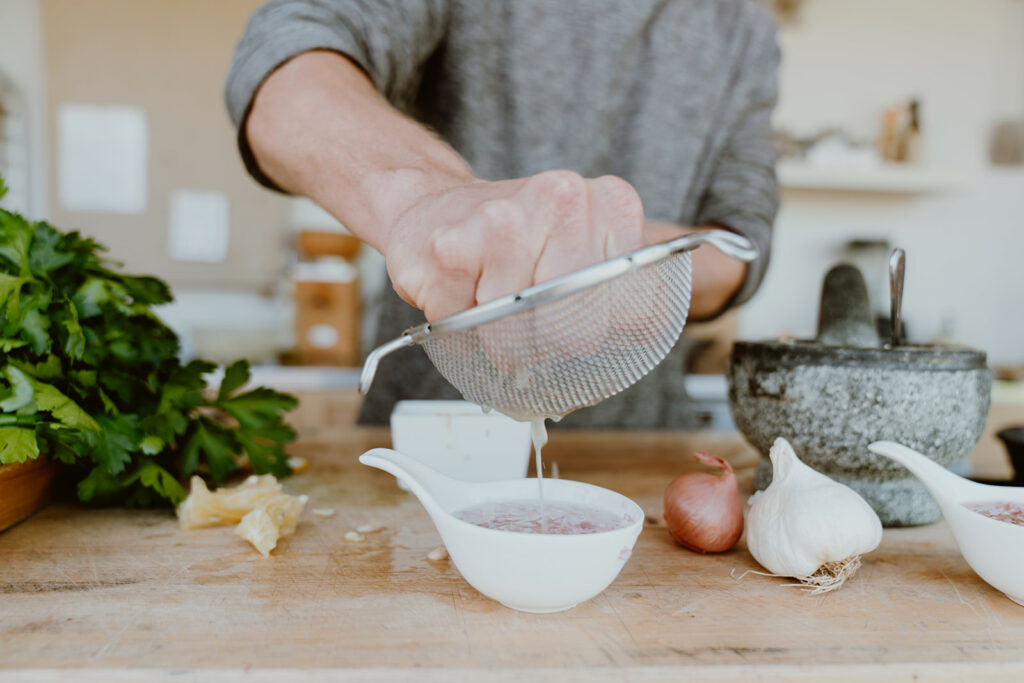
Using a strainer to keep out the seeds, squeeze the juice from the Meyer lemon cores over the minced shallots. Ensure they are fully covered by adding a little bit of champagne vinegar. Champagne vinegar compliments citrus juice because it is bright and crisp. Avoid one that is oak barrel-aged. Allow the shallots to macerate for at least 15 minutes.
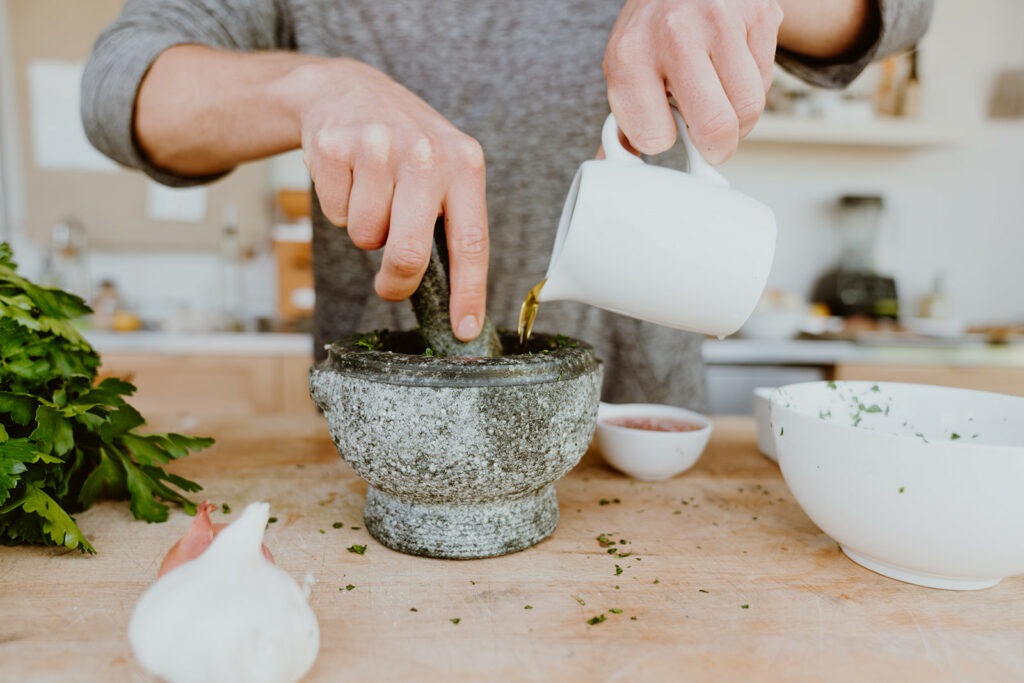
Now either mince and pound the garlic with a mortar and pestle or grate it finely. Combine it with parsley, sprinkle with salt, and cover with olive oil. The garlic will infuse in the oil while the salt and oil will preserve the parsley’s bright color.
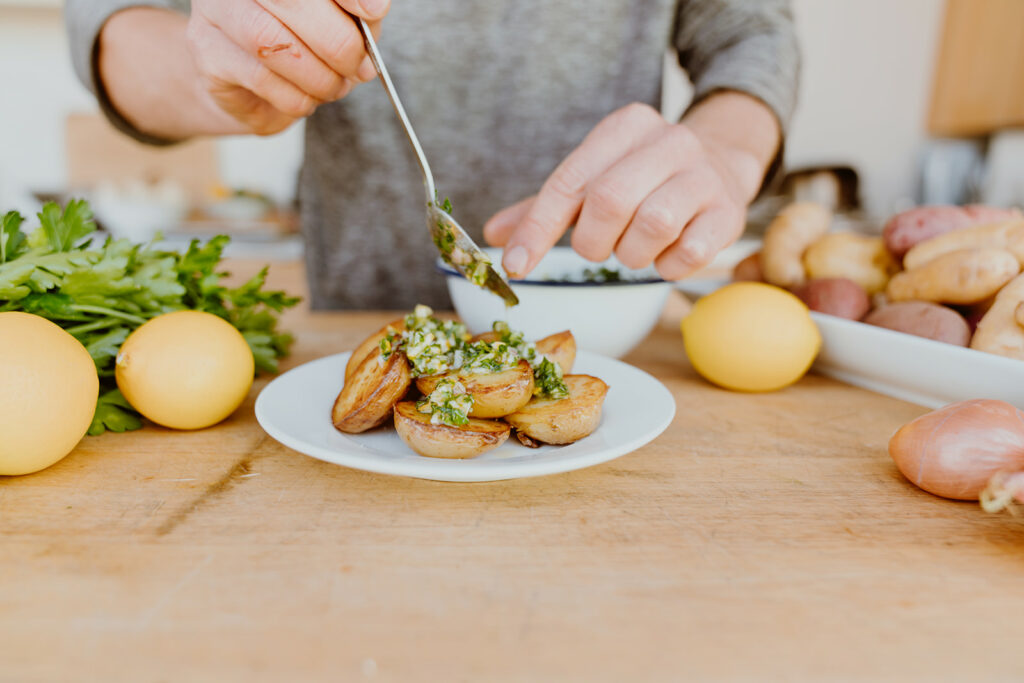
Once the shallots have macerated, combine the parsley oil, shallots, and meyer lemon bits. Taste and add salt if needed. You can adjust the viscosity by adding more oil.
Serve generously over fish or roasted or grilled vegetables.


